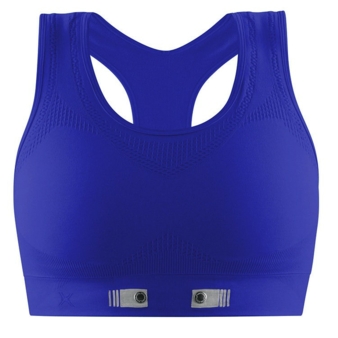28/01/2015 — auf Deutsch lesen
Smart textiles: Forever a niche?
A new product category with little marketing activity will always result in low levels of consumer awareness. The opportunities lie in particular in technological advances that can improve product quality, and in solutions that are more relevant to consumers.
Smart textiles are textiles that interact with their surroundings and thus offer intelligent added value. People have been forecasting great success for such products for years, yet so far a breakthrough has proved elusive. Despite an abundance of research projects, developments and ideas, only a small proportion of prototypes have gone on to further development, mass production and a long-term presence on the consumer market. Very few broadly-based marketable products have come into existence.
As part of a bachelor dissertation produced at the beginning of 2014 for the Clothing Technology/Fabric Processing course at the Berlin University of Applied Sciences (HTW Berlin), research was conducted on the problems that lie at the heart of the failure to achieve long-term market penetration and on how the success rate might be improved.
First, various industry experts’ comments on the subject were assembled and summarised, in order to identify the general view. A road map was then developed to provide an overview of the technologies, functions, extent of integration and, by means of product examples, the development and change processes. In addition, the results of a previously undertaken study of the market for smart textile products were included, with a focus on clothing products. This was used as the basis for depicting the market situation as represented by the proportion of market-ready products and the key problems and trends arising from this.
In order to obtain information that could not be derived from this analysis regarding innovation management and potential variations, two online surveys were conducted. One of these studies consisted of a consumer questionnaire exploring customer requirements; the second set of data came from a manufacturer survey and provided a point of comparison with consumer attitudes, in order to uncover divergences between the two and to provide a source of information on the current situation. The results were used to draw up a SWOT analysis of the smart textiles industry and to prepare a list of measures and approaches that might provide solutions to the problems thus revealed.
The research showed that the problems and reasons relating to difficulties in introducing smart textile products onto the market are very diverse. There are differences between companies’ and consumers’ perceptions, especially in the areas of product awareness, customer appeal and the benefits of the products, not to mention price acceptance. Despite having an interest in smart textiles, 26 percent mentioned lack of product awareness as a reason for not having bought any such products. Lack of perceived personal benefit was mentioned by 25 percent, lack of opportunity to buy by 24 percent and perceived poor value for money by 12 percent. Compared to other answers, the proportion mentioning lack of trust in product safety or reliability was negligible. The consumers questioned were prepared to accept a premium of between 16 percent and 41 percent for intelligent fabrics over conventional sports clothing.
In order to identify potential customer and target groups, the results relating to specific groups in terms of awareness levels, interest and purchase experience were eliminated from the analysis. Nonetheless, no relevant relationships were uncovered. The reason for this lies in the unequal distribution of age and sex in the sample. According to the findings of the survey, there are potential customers in all age groups and both genders. Regarding suitable distribution channels, 42 percent mentioned specialist outlets, 25 percent the internet, 16 percent clothing manufacturers and 6 percent the electronics market.
Similar messages emerge from the companies questioned: 29 percent suggested the internet as a suitable distribution channel, 24 percent specialist shops, 19 percent trade fairs and 14 percent clothing manufacturers. Specialist shops had been the most popular in a study conducted among companies back in 2003 on the marketing of smart clothes. As a suitable information and communication channel, the internet and articles published in magazines were mentioned by 23 percent, followed by trade fairs at 19 percent.
The two main obstacles to market introductions were identified as absence of market-ready products and low demand in the market. In addition, the products tend to be found in niche and developing markets. There are a range of different fields of application with very diverse requirements. Consumer interest is present to some extent but requires further development in the future.
The research makes it clear that market introductions can succeed only with the development of complex, innovative strategies and through cooperation between complementary specialisms and companies. The list of action points also shows that the majority of problems can be solved only through future technological advances.
For a more detailed and specific analysis of the problems with, and causes of, the difficulties of market launches, it will be necessary to segment still further the smart textiles market under analysis.
[Friederike Zeugner, Ulrich Bauer, Sabine Gimpel]





